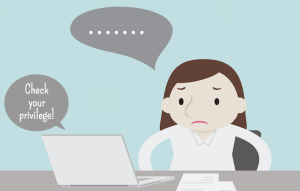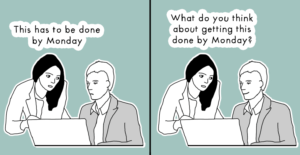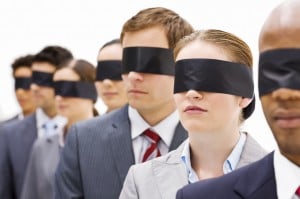Originally published on The Body Is Not an Apology and the author’s blog Coming to My Senses and republished here with their permission.
Dear Neurotypicals Who Love or Know Someone with Sensory Processing Disorder (SPD):
It’s a very common theme among SPDers, especially on our group threads: How do I explain SPD to those who love and care about me and who truly want to understand?
This is not the same kind of explaining we do when people just don’t understand SPD or don’t care to try. It’s not defensive. There are no excuses.
It’s the explaining we do when someone says to us, with all sincerity, “I love you, I appreciate you, I want to know more about what SPD means for you so that I can fully support you.”
First of all, hooray for you!
In a world so swiftly moving towards the acceptance and understanding of the most diverse groups of people, you are one of the open-minded, kind-hearted who dare to believe that we are more than just our diagnoses or our struggles.
If blogs allowed me to hand out gold stars, I would be pressing one into your hand as you read this. Perhaps this will suffice. And yes, it’s the lick-and-stick kind from childhood:
We SPDers are lucky to have individuals like you in our lives to remind us that we have inherent worth beyond all measure.
Let me caution you that what I’m about to write isn’t everyone’s complete truth about SPD. All people of all backgrounds experience the world through slightly different lenses.
As Albert Ellis of the REBT school of psychology believed, we are the products of our upbringing, our culture and family, our environment, and our circumstances.
We all see the same world slightly altered by our perceptions, and although these perceptions are often warped and need to be re-evaluated, they are ours and ultimately no less valid.
My experience of SPD, while “typical” is not necessarily the only and final word on the disorder, although it’s as good a place as any to begin.
Think of this post as your cheat-sheet. It is your peek into the world of SPD.
And hey look, it’s neatly numbered too! Just might be your lucky day.
1. We All Are Sensory Beings
Your local butcher, the woman next door, the President, even you – we’re all sensory beings.
Feel the breeze on your face? Hear the sound of chiming bells in the distance? See the flock of birds spiraling across the sky?
Congratulations, my friend, you are human, you engage with the senses.
Our senses usually work to help us understand the world around us. Siren blaring? Pull that car over, you might just be getting a ticket. Lose your balance on the subway this morning? The conductor probably hit the brakes too hard. Something crawling on your arm? Quick, flick it off. Stupid fly.
2. We All Have 8 Senses (Yes, 8! And the 6th Isn’t Seeing Dead People, Sadly)
You ready for a list? Hang on tight:
- Visual System (sight)
- Gustatory System (taste)
- Olfactory System (smell)
- Auditory System (sound)
- Tactile/Somatosensory System (touch)
- Proprioceptive System (muscle/joint movement, where body is in space)
- Vestibular System (balance)
- Interoceptive System (state of internal organs)
These are non-negotiable.
3. SPD Is Like a Neurological Traffic Jam in Which the Senses Don’t Work Properly
Credit goes to the Occupational Therapist, Developmental Psychologist, sensory pioneer, and all-around superwoman A. Jean Ayres for the beautifully-worded analogy above.
For those of us with SPD, the wiring in our brain is different. (Want to know how? Check out the groundbreaking study by UC San Francisco, 2013.)
Because of these differences, we sometimes feel input from the senses more than you or less than you, or we don’t notice the input at all.
Imagine that the sound of people talking one table over at a restaurant is so loud that you have to strain to hear the person sitting right next to you. Envision the fluorescent lights at a supermarket being so bright that you have to squint to read the names of the products on the shelves. Picture walking into furniture in your path because you cannot, for the very life of you, figure out where your legs end and the world begins.
Now imagine all of these amazing things happening at once, vying for your attention. Beep beep, honk honk.
Where’s a traffic cop when you need one?
4. SPD Is Also Like a Soundboard – Except the Sound Technician Is Terrible at His Job
Welcome to my favorite SPD analogy.
Imagine a sound technician working a soundboard like the one above, but he clearly has zero training. Some toggles are slid too far up, some are slid too far down, and sometimes he’s just on a perpetual coffee break and doesn’t give a treble about what’s happening on stage
SPD is that haphazard soundboard and that ill-hired technician all in one.
SPD is so complex and varied, and each adult with SPD experiences each sense differently.
For me, for example, the toggles for sound and sight feel like they’re pushed way up.
I hear almost every small sound within earshot all at the same time, which can make outings like parties, concerts, theme parks, and zoos absolute nightmares. So much noise! No end in sight!
I see things similarly.
When I’m feeling overwhelmed, it’s as if my eyes are taking in even the tiniest details within my field of vision – every shadow, every nook and cranny fight to be recognized by my brain through the portal of my eyes all at the same time.
For me, sound and sight are always in competition. Sometimes I think to myself, “So, do you want me to hear or to see? ‘Cause I sure as hell can’t do both at the same time.”
However, my toggles for touch and proprioception are pushed way down.
I give massive, engulfing bear hugs, and I demand them from pretty much anyone in my immediate vicinity. I hug landlords and dear friends, the woman who threads my eyebrows and my family. They must be deep, tight, and lengthy or it feels as if they haven’t happened at all.
I am always fidgeting – softer, textured, and cooler objects get the most love from my fingertips. I also am perpetually looking to crunch on crispy foods and crash my body into solid objects (sometimes I’m not looking to crash into solid objects but I am mysteriously covered in bruises anyhow). I am known to drop eggs and knives at the most inopportune moments.
My body is constantly asking itself, “Where am I?”
When our SPD gets out of hand (in SPD-speak “dysregulated”), our sound technician is essentially asleep at the soundboard, and the toggles have slid all over the place.
When we use tools, exercises, and techniques from occupational therapists, physical therapists, and psychotherapists, our sound technician is actually getting the hang of his job – and our toggles are more evenly spaced.
If lights are our problem, they feel less bright. If sounds are our issue, they feel less loud. With the right combination of help, the things we typically avoid, we avoid less, and the things we usually crave, we crave less.
Score.
5. SPD Causes Extreme Emotional and Behavioral Responses
Imagine that I’m your favorite little sibling, and I am poking you square in the eye. Repeatedly. Without stopping. Poke. Poke. Poke. Poke.
At some point, wouldn’t you feel irritated? Wouldn’t you feel angry? Wouldn’t you scream and shove the little twerp out of your way? Wouldn’t you maybe avoid my pudgy finger in the future? Wouldn’t the mere memory of my incessant poking cause you some visceral reaction of frustration and irritation? “Stupid kid,” you’d grumble to yourself.
When things annoy us – neurotypicals and SPDers alike – we have an emotional reaction to them, and then we have a behavioral response to them (in the example above, we get frustrated and we pull away).
Because we SPDers can’t process sensory input in a typical fashion, most of the input we receive from the senses makes us feel like we’re being endlessly poked in the eye. It is supremely distressing.
SPDers tend to become emotional in the presence of too much sensory input and also have a behavioral response. We yell, we cry, we flee the situation, we lay down on the floor, we bite people and things, we reach for our fidgets and talisman and anything to help us just get through the moment.
For those of us diagnosed with SPD in adulthood, we’ve spent decades not knowing why we felt this way in moments when our parents, siblings, friends, and significant others were having no issues and saw no problems with a situation.
If you and I were in a room together during an earthquake, I’m sure our reactions would be similar. Fear would pulse through our bodies, we’d feel off-kilter together, perhaps we’d shriek or duck under a table. Our twin reactions would be warranted. They’d make sense.
But imagine being the only one reacting to a situation that others don’t even think twice about or notice.
Envision clamping your hands over your ears and running out of the room – all in response to something seemingly benign – as everyone else looks on with judgment and in surprise.
6. What’s Benign to You Isn’t What’s Benign to an SPDer
Our emotional and behavioral responses to what are thought of as “common,” “easy,” and “problem-free” situations (a picnic, an office holiday party, the library, a department store) – while warranted based on how we’re feeling internally (sometimes terrible) – look out-of-place and blown-out-of-proportion to those on the outside.
Who fears the circus? Who shies away from a dinner-date? Who finds outdoor summer movies excruciating? Who is terrified of the local beer garden?
We SPDers.
Fun things are not always benign.
SPD is much like that little pesky sibling I mentioned in #5, except we’re being poked and prodded almost all the time, even in moments deemed “enjoyable” by the neurotypicals in our midst.
If the event engages our most sensitive senses to a point beyond our comfort level (read: that final sibling eye-poke before you lose your cool), we will often refuse to participate in the event or we will be forced to work supremely hard to keep ourselves feeling as well as possible during the event. (This is more taxing and overwhelming than I have room to properly explain in this post, so take my word for it).
All of this while our brain’s faulty wiring is sparking wildly, our emotions are overflowing, and our gut is telling us to run away/hide in the corner/punch the waiter.
There’s only so much eye-poking one can take before one loses it completely.
7. What’s Enough for You Isn’t What’s Enough for an SPDer
Some of our senses are less sensitive.
Like I said earlier, while I might avoid situations that challenge my visual and auditory differences, I will often actively seek input from tactile and proprioceptive sources. I will go overboard trying to find my daily hug if my husband/handler is out of town, and if I spend an entire day without that deep-pressure touch, I will be emotional and enact certain behaviors. (In this case, I’ll probably cry and then “hit the deck” – my favorite term for pressing my entire form against the floor to attempt to connect with my body.)
In some ways, this is like the opposite of the eye-poking analogy I brought up in #5. Here, we are almost asking our irritating sibling to just go ahead and poke us square in the eye and never stop.
“Please,” we beg them, “it’s somehow comforting and we’ll stop taunting you in front of your friends if you just continue.”
It’s a counterintuitive statement, but we sometimes need input from particular senses or we feel completely empty and devoid of their properties.
Think about the soundboard again for a second.
If certain toggles are slid down too low, the concert is missing crucial components (you know I’m all about that bass).
All toggles need to be somewhat aligned for a being to feel in harmony, and because some of our toggles are too high and some are too low, we are desperately seeking balance.
8. SPD Adults Often Have Other Diagnoses As Well
Because we didn’t know what was going on with our systems growing up, and because we so often thought that we were just being crazy/strange kids, teens, and young adults due to our reaction to those “benign situations” I mentioned earlier, we learned to fear and avoid many places and activities in the event we’d feel uncomfortable.
When our emotions and our behaviors have no noteworthy origin or cause to point to (“I feel awful because of x”), we’re left pointing at ourselves (“I’m a bad person, what’s wrong with me, I’m to blame”) and pointing out into nothingness (“this scenario is to blame”).
We feel anxious and depressed, and we assign deep meaning to the wrong things.
Anxiety disorders and depression are supremely common secondary diagnoses for adults with SPD, but our issues can span the gamut.
One person’s discomfort having food in their mouth (hey, gustatory system) can look like an eating disorder while another’s swinging moods (what’s up, dysregulation) can look like a personality disorder or a mood disorder.
Some of these diagnoses exist on their own, some are SPD in disguise, and some are hard-wired patterns from decades of misunderstanding.
If you ever sort out which is which, give me a call. You surely win a prize.
9. SPD Adults Thrive with Multiple Levels of Treatment
Most people assume that SPD means occupational therapy, and they are partially right. OT is the place for SPD adults to begin their diagnostic journey.
It’s the place where we’re given our diagnosis, we’re put on a “Sensory Diet” (exercises, tools, and techniques to help regulate our sensory soundboard), and where someone says, usually for the first time – “Hey, good lookin’, you’re not crazy. You’re just wired differently.”
It’s a truly incredible experience, one that is many years in the making for most SPD adults.
Here is where things change for the adult SPD population.
It’s time for yet another analogy.
We SPD adults have lots of eggs in our sensory baskets. When we’re kids, we don’t have a whole lot going on. We go to school, we come home. Maybe we have a playdate or two. Our brains are still growing and forming connections (a thing we call “neuroplasticity”) which means it’s easier for them to be rewired.
Our SPD is in its infancy – it’s purely an uncomfortable internal feeling paired with a behavioral response (the classroom is loud so I will act out). There’s little emotion involved from a thinking and rationalizing perspective (“I must be anxious because…” is a phrase I hope SPD kiddos don’t utter).
Families and schools swoop in, the kid lands in the talented laps of OTs, and all sorts of rewiring activities are undertaken. There are swings and beanbags and balls and discs. If kids have maybe just a few eggs, they’re placed in one basket, and that’s fine. It only takes that one basket to tweak what needs to be tweaked, and many kids can make so much progress in OT that they nearly grow out of their SPD diagnosis – yay!
Adulthood is another story. We have a whole lot more eggs.
We have responsibilities in multiple spheres:
- Work
- Social
- Romantic
- Familial
- Financial
Not to mention the ongoing development of self through activities that help us grow and bring us pleasure. That’s a lot more eggs than we had in childhood.
We’ve misunderstood our own selves for decades, others have misunderstood us as well, we’ve assigned emotion and meaning to our discomfort and behaviors, and tada – what was once a few eggs is now a good few dozen.
In my experience, it’s always best to diversify those eggs.
Through trial and error, I came up with what I call the Tripartite Model of Adult SPD Treatment, which basically means that I believe three major types of therapy can have a huge impact on adults with SPD – the same way one type of therapy has a huge impact on kids with SPD.
- Occupational Therapy: for diagnosis, tools, and tricks (Sensory Diet)
- Physical Therapy/Vision Therapy: for the strengthening of individual senses
- Psychotherapy: for secondary, related diagnoses as well as for learning to accept SPD
The adults most successful at managing their SPD have been to most if not all of these three therapies. Now if only insurance would understand the need to cover them…
P.S. I could go on for days about this model, so e-mail me if you have any questions or want to discuss it further.
10. Our Tools and Tricks May Look Funny, But They’re Effective
I wear blue-tinted glasses most of the time because they help me process visual information. I play (ahem, “fidget”) with fur-covered statuettes shaped like animals because they feel good on my fingertips and help me calm down. I sleep under a 17-pound blanket because it helps me understand where my body ends, and so I can rest enough to fall asleep. I tote around two different decibel-levels of earplugs at all times.
Normal? Not really in Neurotypicalville, quite common in SPD Land.
Helpful? Yes. One hundred times, yes.
Worrisome for you? Nope.
We do what we can to keep our senses regulated, and these techniques, among others, are highly effective.
11. We’re Not That Different from You – And Yet, Sometimes, We Are
You know this already, remember?
I gave you a gold star for your open-mindedness, and I truly believe that nothing I’ve said here is too bizarre or complex to grasp – surely nothing is beyond your warmth and kindness.
In a world where we all engage with the senses to some degree, SPDers just engage with them a bit differently.
They can be overwhelming or underwhelming, they can cause emotions and behaviors to surface, and we have therapies and ways of keeping our unique needs at bay.
We still get up in the morning, brush our teeth, and make breakfast. We love our families and friends. We work hard and we play as hard, when we’re able.
Somewhere in between, though, things get a bit iffy for us. We feel overwhelmed, we get scared, we fight against that very old, negative voice inside that says, “Hey, wackadoodle, you are strange.”
Know an adult with SPD? Love them? Care about them? Just be you – an educated, nurturing version of yourself. Ask how you can support them and let them guide you. Don’t question their methods, just understand their purpose.
Hey, if it helps, I know you can.
[do_widget id=”text-101″]
Rachel S. Schneider, M.A, MHC is a mental health counselor and proud Sensory Processing Disorder (SPD) adult. Rachel authors the blog Coming to My Senses at www.comingtosenses.blogspot.com, maintains a website on adulthood SPD at www.rachel-schneider.com, and leads a Facebook support group for adults with SPD at https://www.facebook.com/groups/SPDAdultSupport. Rachel lives in New York City with her husband and she firmly believes that her body is not an apology – it is a triumphant shout.
Search our 3000+ articles!
Read our articles about:
Our online racial justice training
Used by hundreds of universities, non-profits, and businesses.
Click to learn more






















